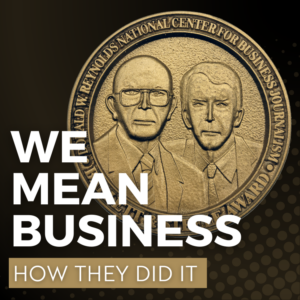The greeting card industry faced significant turmoil throughout 2020. National paper goods retailer Papyrus collapsed in January amid debt woes and was forced to close its 254 stores. In early March, competitor Paper Source acquired 30 of those stores in an opportunistic move that backfired almost immediately. The “conversion and rebrand” process for the former Papyrus locations was barely underway when the coronavirus pandemic hit the U.S.
One year later, Paper Source filed for a Chapter 11 bankruptcy of its own, leaving a diverse array of small-business creditors from across the industry in the lurch. The fate of its recently expanded, still-open store fleet is now in question. A sale like that of Northeastern retailer The Paper Store, which avoided liquidation in September, may be in store for Paper Source as well on April 30.
Regardless, greeting card makers are on track to lose a significant swath of their clientele. These stationery retailers are easily categorized as another casualty of the pandemic, which has accelerated the extant decline of brick-and-mortar stores.
It could be tempting for reporters to generalize even further, to say that anything and everything in the realm of paper is declining, that e-cards are the present and future.
“Step aside Hallmark, there’s a new gifting platform in town,” proclaimed an August article in Forbes about e-card app Givingli.
“Will people go out of their way to purchase a physical greeting card when they shop online & ship to loved ones? We think not,” scoffed an October press release by GIFgram.
To take these proclamations at face value, though, would just be lazy reporting. It might be easy to lump various analog industries together as an establishment to be overthrown by some digital revolution. But as it turns out, despite the store closures, the current situation for greeting cards is much more nuanced than that.
Last month, Hallmark, which in 2017 had a market share of 51.2%, more than twice that of its closest competitor, decided to shut down its e-card business. It was a surprising retrenchment for a company that saw its e-cards as an antidote to “soulless” modern communication, and still wants to “concentrate on developing new and innovative services.”
This isn’t just a case of establishment businesses getting forced out by new entrants, either. Paperless Post, founded in 2008 as a digital greeting card company, has spent much of its existence becoming quite paperful. It moved into physical cards in 2012 and started partnering with Paper Source to sell those cards in 2017. Co-founder James Hirschfeld told The Wall Street Journal last year that “people younger than 30, we find, are not even engaging with digital greeting cards.”
At this point, it seems consumers’ choices are not between physical cards or digital cards, but physical cards or social media messages. And much like vinyl records, greeting cards are experiencing a resurgence driven by millennials. Maria Ricapito wrote for Marie Claire in December that 40% of millennials were planning to send holiday cards for the first time. This syncs up with previously reported booms in card sales earlier in the pandemic, and in fact, millennials already spend more money on greeting cards than baby boomers.
Somehow, the industry is even becoming trendy, if the Kardashians’ supposed entry and Foxdog.com’s NFT greeting cards are any indication.
In short, a decline in physical stores does not necessarily mean a decline in physical media. Just because this pattern has been observed in various other industries (see: video stores and DVDs) doesn’t mean it holds true in every field. Business journalists should be wary of the sort of credulous reporting that groups the two distinct factors together, conflating different levels of the supply chain.
Otherwise, one ends up doing something like touting e-cards as the future of their industry, mere months before the nation’s largest greeting card manufacturer shuts down its e-card site.











